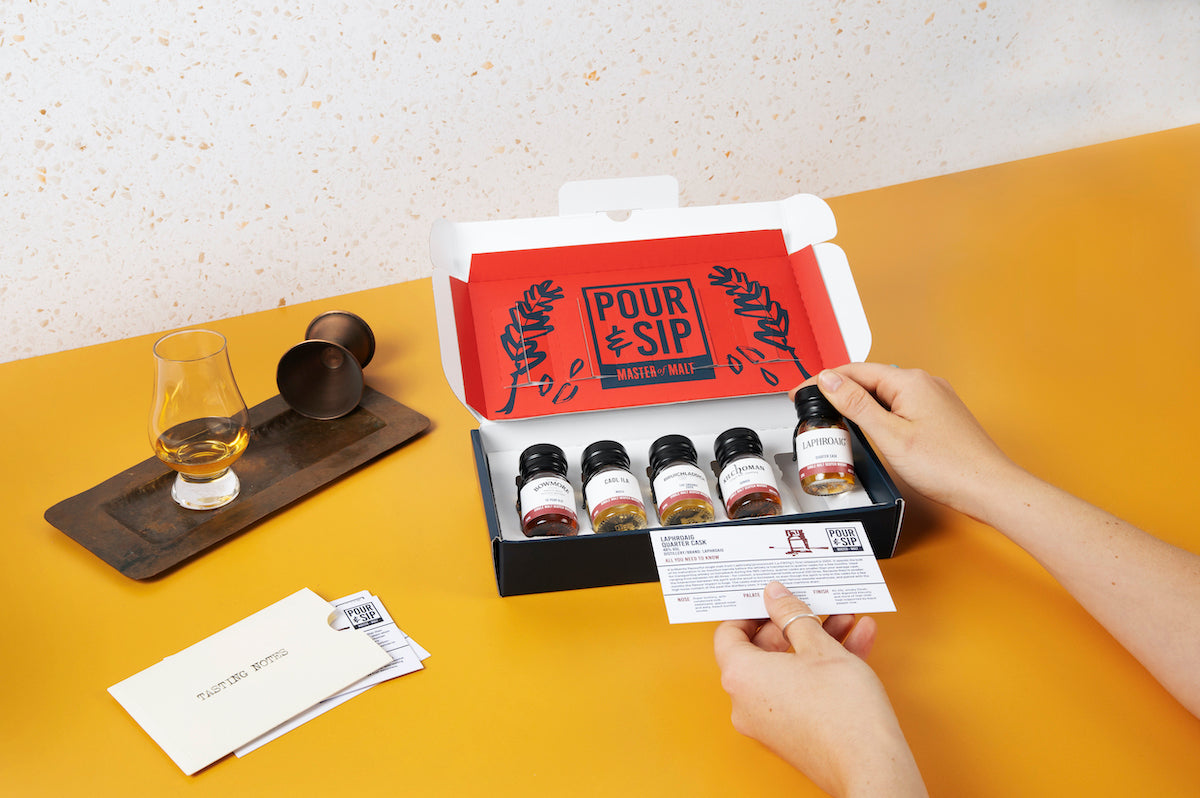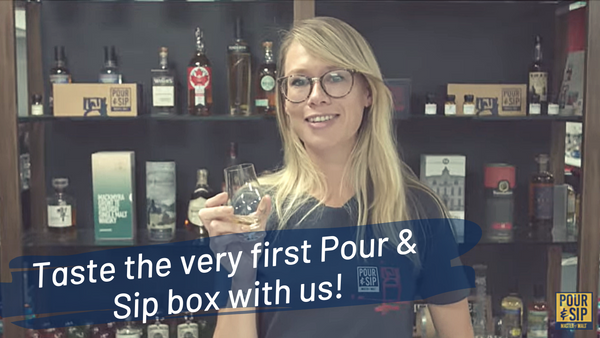An Islay bonanza with May's box

Though the famed island of Islay is only 25 miles long, it packs in nine beloved distilleries – and there are plenty more in the planning pipeline! It may be most well-known for the smoky nature of its whiskies, and while that is a hallmark flavour it’s not always all about peat. In May the island celebrates its annual whisky and music festival, so we thought we’d fill this Pour & Sip box with five top-notch Islay drams to celebrate. Islay is notoriously difficult to travel to, and while many make the pilgrimage, with this Pour & Sip box you can enjoy the spoils of the isle from wherever you wish! Don’t forget to tune into our live tastings on 5 May and 19 May at 7:30pm on YouTube, Twitter, or Facebook.
Kilchoman Sanaig
One of Islay’s smaller distilleries, you’ll find Kilchoman further inland than many of its fellow distilleries, rather than immediately on the shoreline. It’s also one of its younger distilleries, the first to be built on the island in 124 years when it was founded in 2005, in an old farmstead where the grain used in the whisky is also grown. Unusually, Kilchoman malts its own barley, and matures and bottles its whisky on-site. This is Sanaig, named after an inlet on Islay’s dramatic Atlantic coast. Peated to 50PPM (parts per million) the single malt is a blend of both sherry and bourbon-matured whiskies, with a higher proportion of the former. It’s not a sherry bomb, however, with the casks adding a balanced dose of dried fruits and spices to gentle peat smoke, coastal elements, and sweet citrus notes.
Caol Ila Moch
Pronounced ‘cull-eela’, Caol Ila is based on the eastern coast of Islay, and its name derives from the Gaelic for ‘Sound of Islay’, which we think is rather lovely. In contrast to the southern distilleries on the island, Caol Ila’s water source is from Loch Nam Ban in the hills. Moch is a peaty single malt named after the Gaelic word for ‘dawn’, and was the first release from Caol Ila without an age statement, instead being selected on the basis of its taste rather than age or cask types. Although Caol Ila peats its malt to the same level as many other well-known Islay distilleries, its unique distillation process means that the flavour of the peat is dialled down – it’s known for its softer smokiness, making it a good introduction to peated whiskies.
Bowmore 15 Year Old
Bowmore claims that it’s not only the oldest distillery on the famed Scottish island of Islay, but the second oldest in Scotland, founded in 1779. This is the beloved 15 Year Old, first released back in January of 2007, and the single malt is initially matured in ex-bourbon barrels before being moved to ex-Oloroso sherry casks for the final three years. With the distillery’s distinctive maritime peat smoke, the tropical fruit from the bourbon maturation, and red fruit and spices from the sherry finish, it’s no wonder it continues to scoop up numerous gold awards. While Bowmore isn’t the peatiest of Islay whiskies, its smoke levels certainly won’t go unnoticed, peated to between 20-25 PPM.
Bruichladdich The Organic 2009
An intriguing single malt from Bruichladdich, one of Islay’s two unpeated whisky-producing distilleries. In recent years Bruichladdich has started experimenting with how a region's climate, soil and terrain affects the barley and, consequently, the whisky. This release is entirely distilled from Scottish-grown barley sourced from one farm, Mid Coul – organically certified by the Biodynamic Association, no less! Distilled in 2009 (from the 2008 harvest), it was then matured in American oak ex-bourbon and Tennessee whiskey casks for eight years, before being bottled at the distillery using Islay spring water. The flavour profile is led by distinctive, unique barley notes, supported by florals, creamy sweetness, and just a whisper of sea air.
Laphroaig Quarter Cask
A brilliantly flavourful single malt from Laphroaig (pronounced ‘La-FROYg’), first released in 2004. It spends the bulk of its maturation in ex-bourbon barrels before the whisky is transferred to quarter casks for a few months. Used for transporting whisky on horseback during the 19th century, quarter casks are smaller than your average cask, ranging from between 40-60-litres – for context, a bourbon barrel holds around 200 litres. Because they’re smaller the interaction between the spirit and the wood is increased, so even though the spirit is only in the casks for a few months the flavour impact is huge. The casks mature in Laphroaig’s famous seaside warehouse, and paired with the high moss content of the peat the distillery uses makes for a unique maritime dram.



